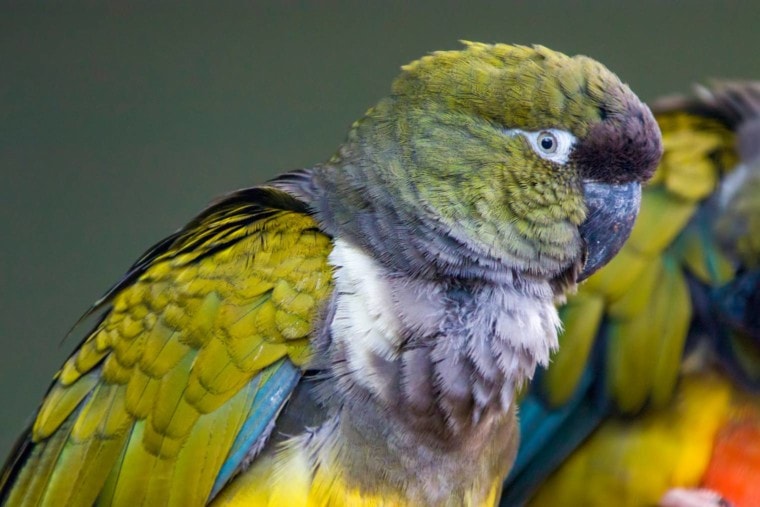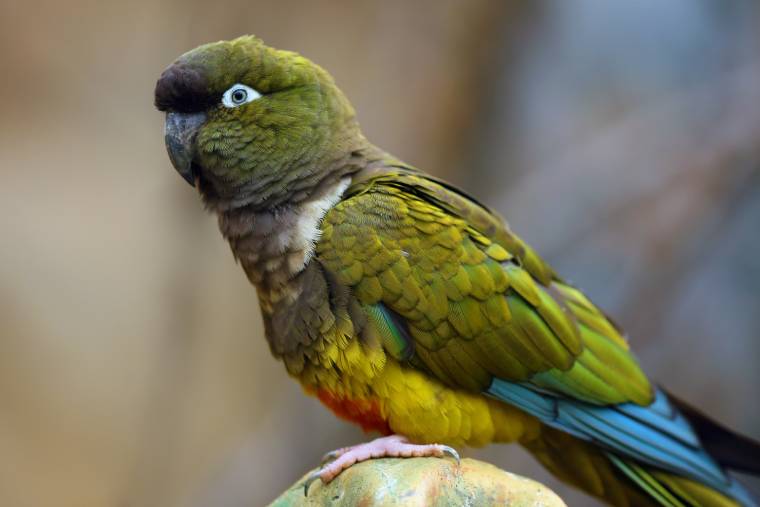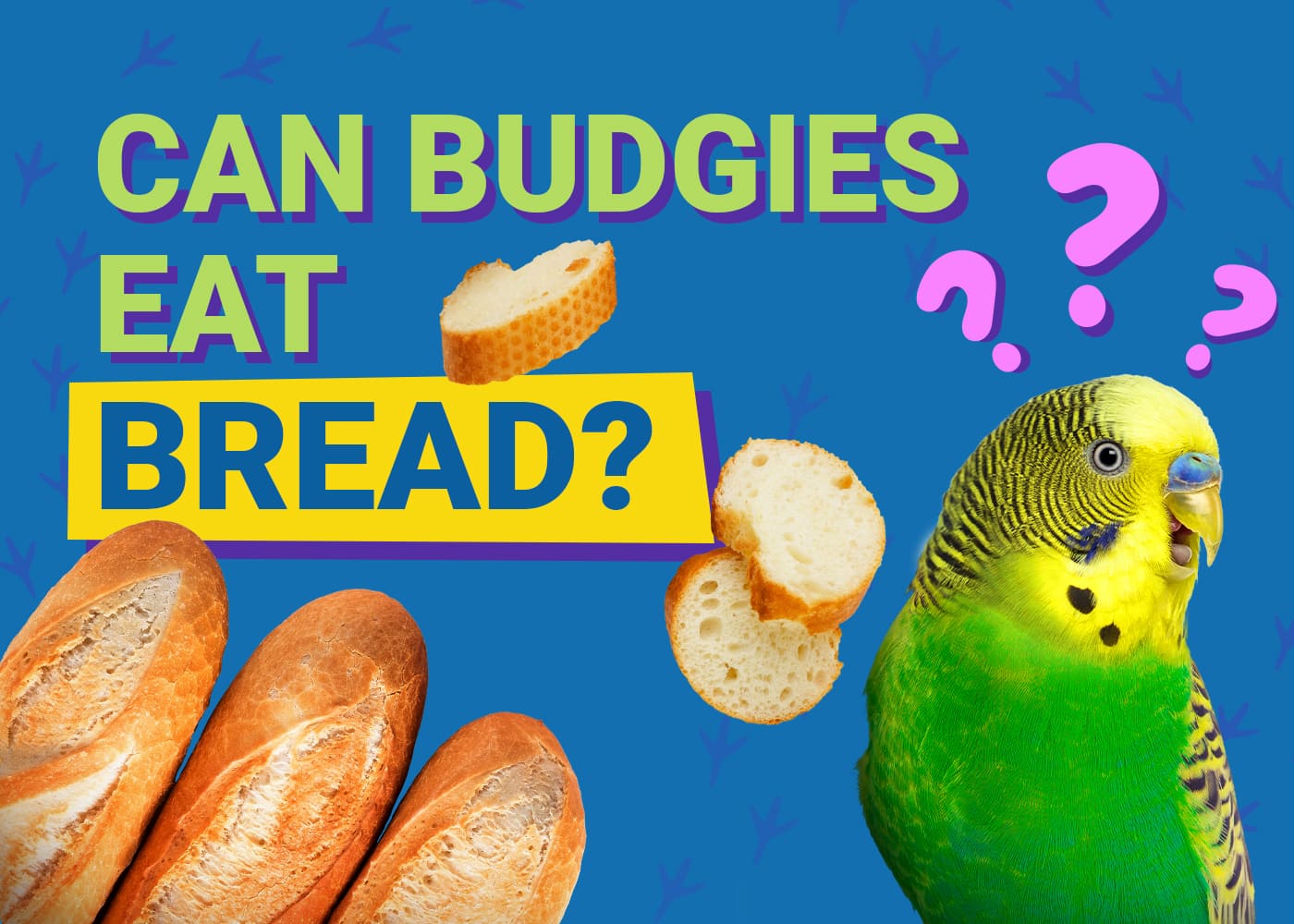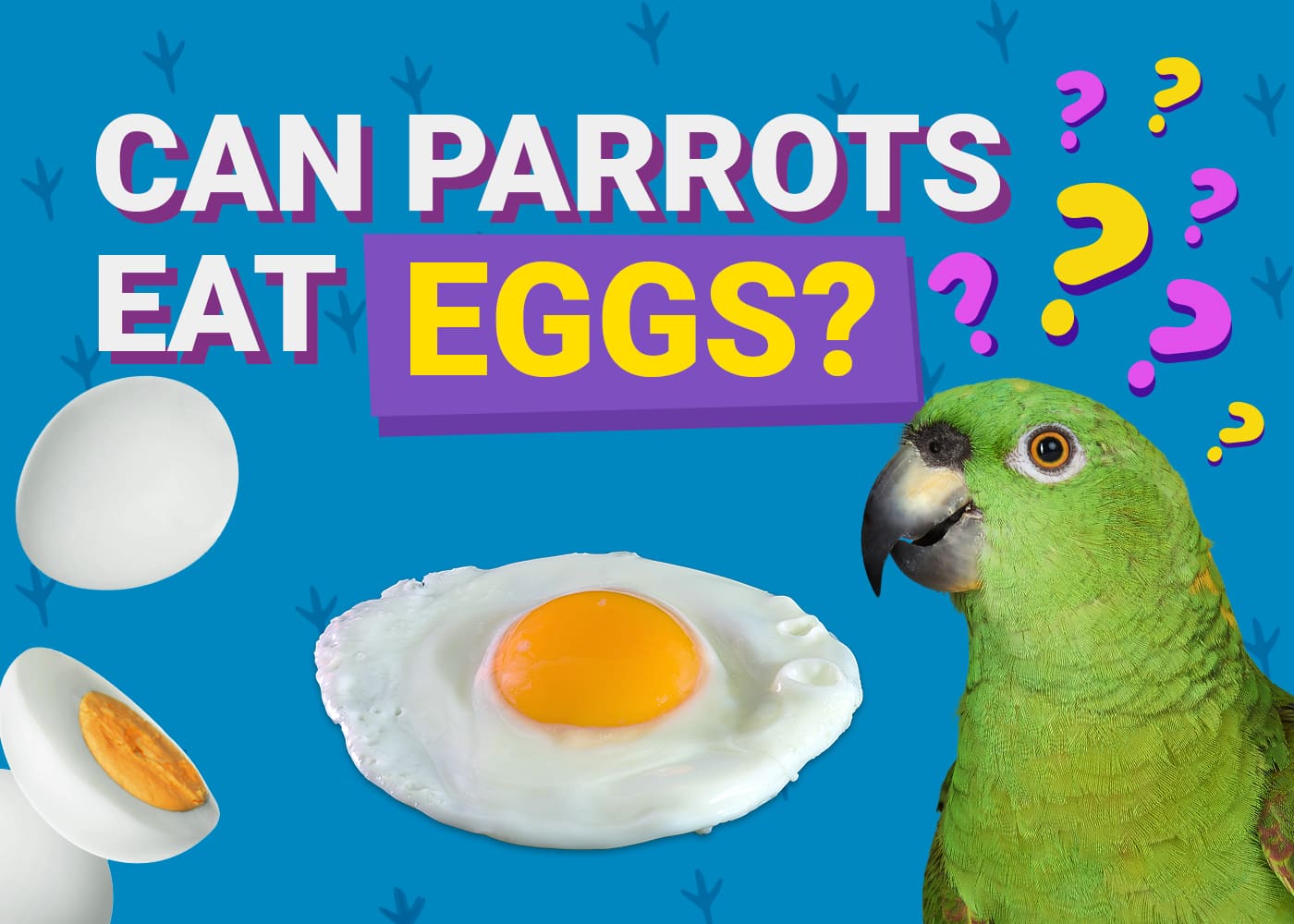
Patagonian Conures are medium-sized parrots native to Chile. They’re often called “little clowns” because of their outgoing personalities and active behavior.
Their diet consists mainly of fruits, vegetables, and seeds with occasional treats like nuts or popcorn. These birds live in flocks, so it’s essential to get one at least eight months old since they won’t bond well with an owner if they are younger than that age.
The Patagonian Conure is one of the world’s most common pet birds due to its popularity in Europe, America, and Australia.
Whether you’re a current owner or thinking of adopting one, read on! This post will discuss the care needs for this species and what makes them such great pets!
 Species Overview
Species Overview
| Common Name: | Burrowing parrot |
| Scientific Name: | Cyanoliseus patagonus |
| Adult Size: | 15-18 inches |
| Life Expectancy: | 20-30+ years |
Origin and History
The origins of this beautiful bird can be traced back to South America, specifically the temperate rainforests of Chile. They live in flocks of 12-30 and usually mate for life.
The Patagonian Conure is known by natives around the region due to its friendly demeanor, small size, cute face, and bright colors. Locals call these birds “little clowns” because of their small stature and funny personalities.
They can live up to 20 years, mainly because they’re not kept in cages but allowed to fly freely around the home and roam indoors as nature intended. In true captivity, they could live up to 30 years!
Their population has been declining recently, and measures might have to be put in place to prevent further dwindling of the wild population.

Temperament
The Patagonian Conure is known for being a very active and playful bird. It will interact with people to the point of mimicking human speech! They also enjoy dancing, tumbling, jumping, and playing tricks on each other. These birds are also extremely loving and have been observed kissing their owners on the lips.
In captivity, they’re described as being a bit more mellow than in the wild. A bored Patagonian Conure will often start screaming and playing with their toys or swing from side to side. Owners need to play active games and interact with these birds on a daily basis! However, they’ll still retain that playful behavior.
These parrots are known as “little clowns” for a reason. They’ll keep you laughing with their comical behaviors and will entertain you every day of the week! If you don’t feel like keeping them active, they can get mischievous-making noise all night long or tearing up your furniture.
You should also know that Patagonian Conures are not very shy when it comes to strangers. They’re very easygoing and will be fine around anyone that’s part of their family, even if they don’t know them personally. Since these birds are so outgoing, new owners should start by interacting with them daily!
Speech & Vocalizations
The Patagonian Conure is a rather talkative bird. It can learn up to 300 words and phrases, unlike other members of its family, such as the blue-crowned conure (Aratinga acuticaudata).
It mimics human speech, but not with the same accuracy as larger parrots such as the umbrella cockatoo (Cacatua alba). The owner will often teach these birds phrases such as “how are you?” and other words that you’d like them to learn.
Some owners have described their Patagonian Conures as great listeners, so they can make for an excellent therapy pet! These birds also love to talk to other parrots and act as mediators in situations where other birds are fighting.
The biggest misconception about these birds is that they’re quiet. Many owners come home to find out their bird has been keeping the neighbors up all night with its shrill screams. If you don’t want this behavior, it’s important to begin hand-taming your parrot or keeping it in a cage for part of the day.

Patagonian Conure Colors and Markings
Patagonian conures are recognizable by their olive-green plumage, darker green wings, and black beak. They also have red patches on their bodies that are accentuated by yellow and white stripes.
These parrots may show white highlights in their feathers due to genetic factors, irregular pigmentation, or being under stress. Males tend to have bolder colors than females do as well as brighter red markings.
Their underbelly is yellow and red, and their eyes are dark brown. They also have a black forehead with a red hue that extends to the back of its head.
The legs and feet of the Patagonian Conure are gray, like some feathers on its chest and neck. The tips of their tails are black, while other parts of them are bright blue.
Some of these birds have crests and pointed or curved beaks, unlike other conures that have a slightly rounded tip to their beak. Many of them also have an unusual toe shape, with the middle toe being longer than its neighboring ones.
 Caring for the Patagonian Conure
Caring for the Patagonian Conure
The Patagonian Conure is a small, long-tailed parrot that can reach up to 12 inches in length. These birds can live for anywhere from 20 to 30 years and are more docile than other members of their species.
These birds aren’t recommended for first-time bird owners since they’re known to be noisy. However, their amusing personality and intelligence are worth the trouble.
Patagonian Conures are tolerant of humans and especially love interacting with them! They can stand being alone for up to a few hours if you have to leave the house, but anything longer than that may cause them stress or loneliness.

Common Health Problems
Unfortunately, the Patagonian Conure can suffer from a few health issues. Some of them include psittacosis, fatty liver syndrome, and feather picking. They may also be more susceptible to bacterial infections since they’re so friendly that many birds are carriers of salmonella or other diseases thanks to their droppings.
These birds can also become obese if their diet isn’t balanced and supplemented with fresh fruits and vegetables. Giving them high-quality bird food can help prevent this, but it’s important to remember that they will eat anything in sight!
Finally, there’s also the possibility of your bird getting mites or lice. These parasites can be found on your bird’s skin as well as their feathers, so it’s important to check for these pests regularly.
Diet and Nutrition
Feeding your burrowing parrot a healthy, balanced diet is key to keeping it in optimal physical shape. The Patagonian Conure needs a high-quality seed mix and plenty of fresh fruits and vegetables, and animal protein.
We recommend feeding your Patagonian Conure as often as they want, but at least once a day. Do watch out for signs of obesity and spoilage, however. Likewise, if your bird refuses food for longer than a day, see a vet as soon as possible.
They can also have some fruits and vegetables cooked in lieu of their regular seed mix. Just be sure not to feed them anything with seeds or the like. They do tend to love things like apples baked into muffins and pancakes!
Vegetables and fruits can be fed either raw or cooked, but make sure that they’re high quality before giving them to your bird. Some things like blueberries are healthy for you but could be poisonous to him!
Birds love to snack on pine and cedar cones, so you should always keep these within reach of your bird’s cage or aviary. Be sure to carve out any jagged pieces of wood, so you don’t risk your pet accidentally ingesting a harmful object.

Exercise
Exercise is important for your Patagonian Conure so they can stay in shape and have fun! These birds love to perch on their owners’ shoulders or sit on their hands, making them great pets for people with limited mobility.
A bird with enough exercise will be an active member of the family, rather than lazy and overweight. Make a fun game out of taking your bird outside for some quality time, and remember to give him baths when he wants them!
You can also play fetch with an older or more domesticated Patagonian Conure. Just make sure that they’re only throwing soft objects like yarn balls or ping pong balls since hard things like rocks or metal balls are dangerous for their tiny beaks.
Mental stimulation is also essential for these birds. They are brilliant and can learn up to 300 words, so teaching your bird tricks or training them to recognize colors and shapes is a great way to stimulate their minds.
The Patagonian Conure can be taught many things, including handling objects and even playing “peek-a-boo” with you! They also enjoy playing games where they have to figure out how to get their favorite toys or food out of the cage.
Socialization is also a great source of mental stimulation! Their natural curiosity and peaceful nature mean that they love meeting new people and playing with other pets. Your bird will grow faster, be happier, and much less aggressive if you spend time socializing them when they’re young.
Where to Adopt or Buy a Patagonian Conure
There are many places to adopt or buy a Patagonian Conure from. You can find them at local animal shelters, pet stores, or online.
You should always thoroughly research any potential bird adoption center before choosing to buy or adopt from them. Ensure they’re knowledgeable about the species you want and provide plenty of good quality food and veterinary care.
The best place to get a Patagonian Conure will be a store specializing in selling birds or a breeder that raises them from the beginning. This will ensure good health and socialization for your new pet!

How Much Do Patagonian Conures Cost?
The Patagonian Conure is quite common, so you can find them at most local pet stores or even online. The price will depend on where you buy them and how old they are but usually varies between $100 and $300.
 Final Thoughts
Final Thoughts
The Patagonian Conure is an excellent pet for people who want a bird that’s easy to find and relatively low-maintenance. These birds are also intelligent, so they’re perfect for owners looking to teach them new tricks or train their minds with mental stimulation games.
The Patagonian Conure has been popular in recent years because of its rich coat of feathers and playful demeanor. They can be found either through adoption or purchase, but the best option is always going local!
If that sounds up your alley, don’t hesitate—you’ll make a new best friend! For more information about exotic birds like the burrowing parrot, feel free to visit the rest of our blog!
Featured Image Credit: Danny Ye, Shutterstock

 Species Overview
Species Overview Caring for the Patagonian Conure
Caring for the Patagonian Conure






